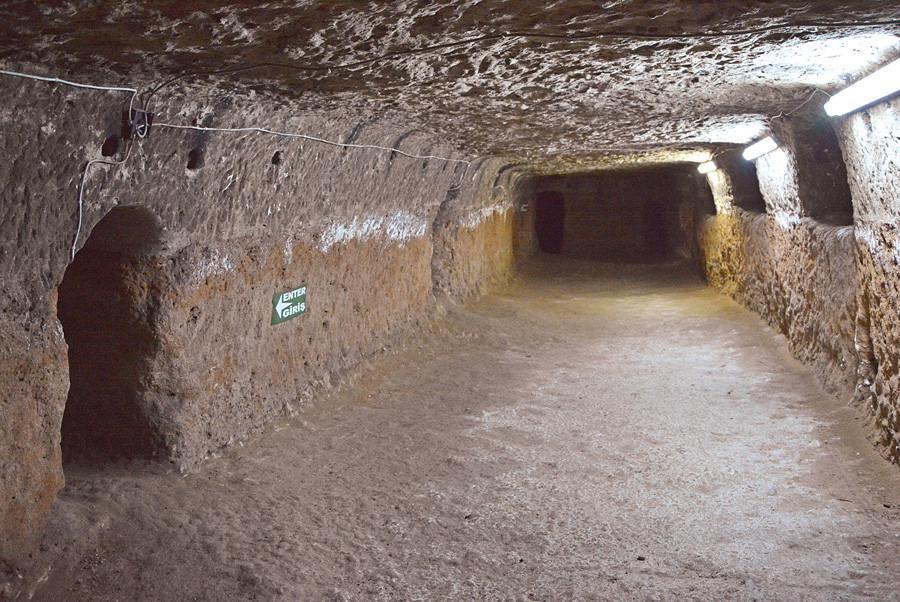
Twelve of 15 underground cities will be unearthed and opened to visitors in the Central Anatolian province of Kırşehir, known as the western gate of the Cappadocia region in the Roman era. The underground cities were used by Christians as places of shelter and prayer.
Cleaning works and environmental arrangements have been made in three of 15 underground cities, located in districts of Kırşehir, which are close to Nevşehir and Aksaray.
The underground cities, which have drinking wells, churches, stone-made entrance gates, rectangle-shaped chambers, feedboxes for animals, ventilation pipes, and lighting places, are connected to each other by tunnels.

The Kırşehir Governor’s Office requested a team from the General Directorate of Mineral Research and Exploration (MTA) to bring five of the underground cities to the surface. The team that came to Kırşehir examined these five underground cities and presented its geological report to the related institutions. Studies will be done for seven underground cities in the city, too.
The city was known as the entrance gate of Cappadocia during the Roman Empire period and there were many underground cities for this reason, said Kırşehir Deputy Culture and Tourism Manager Eyüp Temur, speaking to state-run Anadolu Agency.
Works still continued for 15 underground cities that were discovered and detected, said Temur, adding that the underground cities of Mucur, Kepez and Dulkadirli were reorganized and opened to visitors.
He said the MTA teams examined five other cities and delivered the report.
“We have three underground cities open to visitors in Kırşehir: Mucur, Kepez and Dulkadirli. The underground city of Mucur has 16 chambers and floors. Kepez consists of a single-storey wider area. Dulkadirli is in the form of a monastery. It is three storeys and has a different design with a central square. MTA has surveyed five other underground cities. Seven other underground cities will also be surveyed,” said Temur.
The deputy culture and tourism manager said Kepez and Mucur were close to the Ankara-Kayseri highway.
“The underground cities of Mucur and Kepez, which are located on a route including cities along the Ankara-Kayseri highway draw attention for their different features. Some of our underground cities are made up of tuff rocks and some of them are made of red rocks. We recommend tourists to see this place,” he said.
Temur also said both underground cities were used for taking shelter and praying.
“Both are the western gate of Cappadocia. The entrance to the Cappadocia region, which includes Nevşehir, Kayseri and a part of Aksaray, was from here in the past. In the second century, there were great struggles between the Romans, who accepted Christianity, and the pagans. Those who accepted Christianity stayed in these underground cities for shelter and worship. They did their worship here,” said the deputy culture and tourism manager.